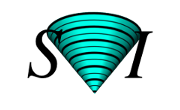The Huygens Software has Deconvolution options for the restoration of images from many different microscope types. It is, however, also possible to use Huygens for many other microscope types. This page gives you an overview.
Confocal Microscopy
Widefield Microscopy
2-Photon or Multi-Photon Microscopy
For instance:
Different PSF generator, though it shares parts with the confocal generator. The reconstruct-PSF tool uses different a-priori knowledge about what the PSF should look like. A number of basic values is computed differently, for instance the Nyquist rate, the expected two-point resolution, and so on.
For 2-Photon microscopes, the Multi-Photon excitation parameter must be set to two in your microscopic parameters (show via right-click on your image while in Huygens)Structured Illumination Microscopy (SIM) from Apotome systems
The Point Spread Function (PSF) can be attempted to be determined experimentally and theoretically. For the experimental PSF, we think that treating the bead images as recorded with a Spinning-disc microscope could be sufficient.
You can also try to deconvolve your data using a theoretical PSF. We think that ApoTome also has a strong widefield component (almost constant light flux along the volume), so you could introduce this component in Huygens in a theoretical spinning disc PSF by increasing the pinhole spacing (to 4 micron for instance) or opening up and setting the pinhole size to 500nm.
Learn more: Apotome Structured IlluminationTotal Internal Reflection Microscopy (TIRF)
Strictly speaking Huygens does not generate TIRF Theoretical PSFs, but customers report good results with high NA confocal PSFs. Proceed by setting the Microscope type of your image to confocal and NA ~ 1.4.
Learn more: https://svi.nl/TotalInternalReflectionSpinning Disk (Nipkow Disk) Microscopy
Brightfield Microscopy
For versions 21.10 and higher, this can best be done in the Deconvolution Wizard or Deconvolution Express in either Huygens Essential or Huygens Professional. If the microscopic parameters specify the image as "brightfield" the image will first be inverted automatically by the Deconvolution Wizard. This is done because dense objects should have high intensity vallues in our deconvolution algorithms. Automatically the Tikhonov Miller algorithm will be selected. This algorithm is strongly advised for all brightfield or equivalent images as this algorithm does not amplify the background noise.
For the other deconvolution tools, the PSF distiller and the renderers the image should first be inverted manually. In Huygens Essential this can be done by choosing the option 'invert image' from the 'Tools' menu. In Huygens Professional select the image and go to 'Deconvolution', 'Operations window', 'Arithmetic', 'One image', and then 'Invert'.
Learn more: Brightfield Microscope